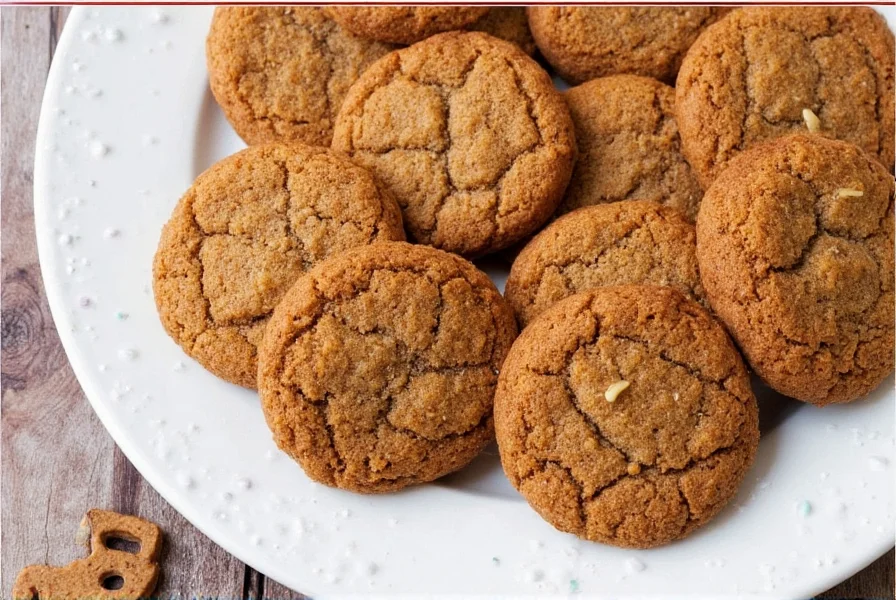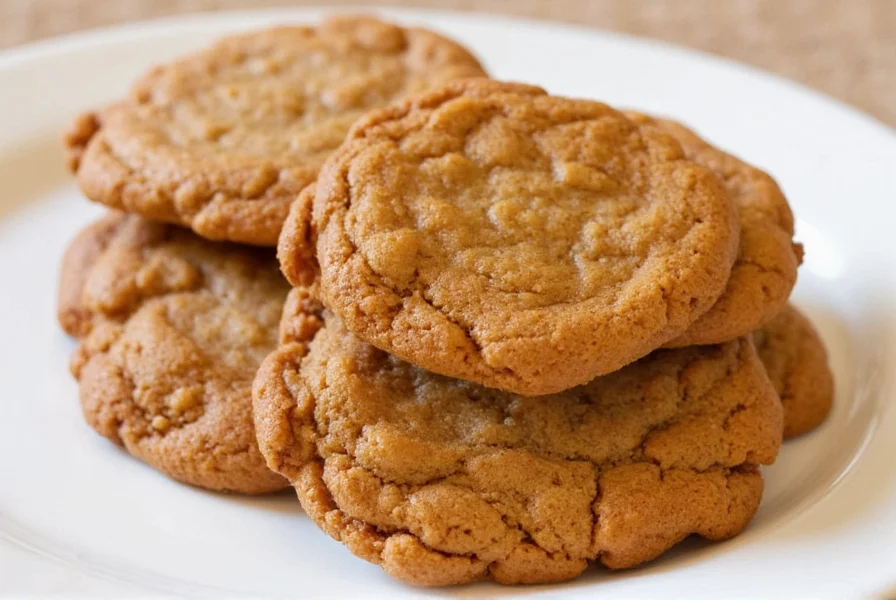The Science Behind Perfect Ginger Cookies
Understanding the chemistry of ginger cookies transforms your baking from hit-or-miss to consistently perfect. The magic happens through several key reactions:
When baking soda meets the acidic molasses in your dough, it produces carbon dioxide bubbles that expand during baking. This reaction creates the signature crackled surface and slightly puffy center. The type of sugar you use dramatically affects texture—brown sugar's moisture content yields softer cookies, while white sugar creates crispier edges. Professional bakers seeking the best ginger cookie recipe for soft texture often use a 60-40 ratio of brown to white sugar.

Ginger Varieties and Their Impact
Not all ginger contributes the same flavor profile to your cookies. Understanding these differences helps you achieve your desired spice level:
| Ginger Type | Flavor Profile | Best Used For | Measurement Ratio |
|---|---|---|---|
| Ground ginger | Warm, woody, moderate heat | Classic texture and consistent spice | 1 tsp per batch |
| Candied ginger | Sweet, intense, complex heat | Texture variation and bursts of flavor | 2 tbsp finely chopped |
| Fresh ginger | Sharp, bright, pronounced heat | Modern interpretations with zing | 1 tbsp grated |
| Crystallized ginger | Sweet, intense, fibrous texture | Decorative elements and texture contrast | As garnish |
Mastering the Classic Ginger Cookie Recipe
While many search for the traditional ginger cookie ingredients, few understand why these components work together. The ideal dough contains precise ratios that create chemical harmony:
- Molasses: Not all molasses are equal—use robust (not blackstrap) for balanced sweetness and acidity
- Butter temperature: Slightly cool room temperature (65°F/18°C) creates optimal spread
- Chilling time: Minimum 2 hours prevents excessive spreading
- Baking temperature: 350°F (175°C) creates the perfect crisp-soft contrast
When troubleshooting why my ginger cookies spread too much, check your butter temperature and flour measurement. Scoop dough with a cookie scoop for uniform size, and place cookies at least 2 inches apart on the baking sheet. For those wondering how to make ginger cookies less spicy, reduce ground ginger by 1/4 tsp and increase cinnamon by 1/8 tsp to maintain flavor balance without overwhelming heat.
Advanced Techniques for Perfect Results
Professional bakers use several lesser-known techniques to elevate their ginger cookies:
- The creaming method matters: Beat butter and sugars for full 3 minutes to incorporate air
- Dough temperature control: Work in a cool kitchen (below 72°F/22°C)
- Pre-measured scoops: Portion dough while cold for consistent baking
- Mid-bake rotation: Rotate sheet halfway through for even baking
- Cooling technique: Let cookies rest on baking sheet for 5 minutes before transferring
For those exploring gluten-free ginger cookie recipe options, a 1:1 gluten-free flour blend works well, but add 1/4 tsp xanthan gum to prevent crumbliness. Vegan versions successfully substitute butter with vegan shortening and use flax eggs, though the texture will be slightly different.
Storage and Serving Wisdom
Understanding proper ginger cookie storage tips preserves freshness and flavor. Store cooled cookies in an airtight container with a slice of bread to maintain softness—the bread's moisture migrates to the cookies. For longer storage, freeze dough balls and bake directly from frozen, adding 1-2 minutes to baking time.
Serve traditional ginger cookies slightly warm with a glass of cold milk or pair with spiced chai tea. The cookies' flavor actually improves after 24 hours as the spices meld and flavors develop—a phenomenon bakers call "flavor ripening."
Frequently Asked Questions
Why do my ginger cookies turn out flat?
Flat ginger cookies typically result from butter that's too warm, insufficient flour, or inadequate chilling time. Ensure your butter is at cool room temperature (65°F/18°C), measure flour properly using the spoon-and-level method, and chill the dough for at least 2 hours before baking. Your oven temperature might also be too low—use an oven thermometer to verify accuracy.
Can I make ginger cookies without molasses?
While molasses is traditional, you can substitute with 3/4 cup honey plus 1/4 cup brown sugar for similar results. However, the distinctive flavor and chemical reaction with baking soda will differ. For best results when seeking molasses alternatives for ginger cookies, use a combination of dark corn syrup (1/2 cup) and maple syrup (1/4 cup) to maintain the necessary acidity for proper rise.
How long do homemade ginger cookies stay fresh?
Properly stored in an airtight container at room temperature, ginger cookies maintain optimal texture and flavor for 7-10 days. For extended freshness, place a slice of bread in the container—the cookies will absorb moisture from the bread, staying soft longer. Freezing is excellent for long-term storage; frozen ginger cookies retain quality for up to 3 months when properly wrapped.
What's the difference between ginger snaps and ginger cookies?
Ginger snaps are a specific type of ginger cookie characterized by their crisp texture throughout, achieved through higher sugar content and longer baking time. Traditional ginger cookies have crisp edges but a soft, chewy center. The key difference lies in the sugar ratio and baking duration—snaps use more white sugar and bake longer at a slightly lower temperature to achieve complete crispness.











 浙公网安备
33010002000092号
浙公网安备
33010002000092号 浙B2-20120091-4
浙B2-20120091-4